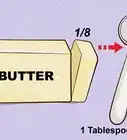This article was co-authored by wikiHow staff writer, Hunter Rising. Hunter Rising is a wikiHow Staff Writer based in Los Angeles. He has more than three years of experience writing for and working with wikiHow. Hunter holds a BFA in Entertainment Design from the University of Wisconsin - Stout and a Minor in English Writing.
The wikiHow Video Team also followed the article's instructions and verified that they work.
This article has been viewed 2,055,116 times.
Learn more...
Baking powder is a leavening agent used to help batters rise when they’re cooked. Luckily, if you’re out of baking powder and in a pinch, you can make your own with ingredients that are probably already in your pantry! Your homemade mixtures will work in your batter more quickly, so make sure you bake it right away!
Ingredients
- 1 tbsp (14 g) of baking soda
- 2 tbsp (10 g) of cream of tartar
- 1 tsp (3 g) of corn starch (optional)
Substitutes 3 tbsp (41 g) of baking powder
- 1 tsp (4.6 g) of baking soda
- 1⁄4 tsp (1.2 mL) of lemon juice
Substitutes 1 tsp (14 g) of baking powder
- ¼ tsp (1.5 g) of baking soda
- ½ cup (122.5 g) of plain Greek yogurt or 1⁄2 c (120 mL) of buttermilk
Substitutes 1 tsp (14 g) of baking powder
Steps
Using Cream of Tartar
-
1Mix 1 tbsp (14 g) of baking soda with 2 tbsp (10 g) of cream of tartar. Use a small whisk to thoroughly sift the powders together. The cream of tartar causes a reaction with the baking soda and forms baking powder.[1]
- Cream of tartar can be found in the baking aisle of your local grocery store.
-
2Store the mix in an airtight container if you’re not using it right away. Use a resealable plastic container and store it in your pantry. Make sure no moisture gets inside the container since your baking powder could clump.[2]
- Baking powder can be stored indefinitely. You can check if your baking soda is fresh by pouring hot water on it and seeing if it bubbles.[3]
Advertisement -
3Add 1 tsp (3 g) of corn starch to prevent clumps. If you don’t plan to use your baking powder right away, it will start to clump up and be hard to use. Stir in 1 tsp (3 g) of corn starch with a whisk to prevent clumping.[4]
Adding Lemon Juice to a Recipe
-
1Add 1 tsp (4.6 g) of baking soda to the dry ingredients of your batter. Whisk the baking soda thoroughly with the rest of the dry ingredients in a mixing bowl.[5]
-
2Pour 1⁄4 tsp (1.2 mL) of lemon juice into the wet ingredients. Keep the wet ingredients, like eggs or milk, in another mixing bowl separate from the dry ingredients.[6]
- Lemon juice can affect the flavor of your baked goods if you use too much. If you don’t want added citrus flavor, do not use lemon juice.
-
3Mix the dry and wet ingredients according to the recipe. Stir all the ingredients together in a mixing bowl. This combines the lemon juice and baking powder, causing the reaction that creates baking powder.[7]
- This creates a single-acting baking powder. Store-bought baking powder is usually double-acting, meaning it leavens your batter when it’s first mixed and when it cooks. Cook the batter once you mix in the baking powder.
Using Yogurt or Buttermilk in Your Recipe
-
1Add 1/4 tsp (1.5 g) of baking soda to your dry ingredients. Keep the dry and wet ingredients in separate mixing bowls. Use a whisk to mix the baking soda entirely into the other dry ingredients.[8]
-
2Use either ½ cup (122.5 g) of Greek yogurt or 1⁄2 c (120 mL) of buttermilk. Both types of dairy are fermented and can trigger the reaction needed to make baking powder. Make sure to use plain, unflavored dairy so it doesn’t affect the flavor of your baked goods and mix it with the rest of your wet ingredients.[9]
- Check the dairy section of your local grocer for Greek yogurt or buttermilk.
-
3Reduce the other liquids used in your recipe to account for the dairy. Buttermilk and yogurt will make your batter runnier if you don’t change the amounts of the other ingredients. Adjust the amounts of your other wet ingredients until you remove 1⁄2 c (120 mL).[10]
- If there are other dairy products in your recipe, reduce their amounts first. Then adjust the levels of any extracts or flavorings you would normally add to the recipe.
- This may affect the flavor and bake of your recipe.
-
4Combine the wet and dry ingredients according to the recipe. Mix all the ingredients together in 1 of the mixing bowls. This starts the reaction between the dairy and baking soda to make baking powder.[11]
- Use the batter right away to get the baking powder’s full effect.
Community Q&A
Did you know you can get answers researched by wikiHow Staff?
Unlock staff-researched answers by supporting wikiHow
-
QuestionHow much vinegar do I use to equal 1 teaspoon of baking powder?
 wikiHow Staff EditorThis answer was written by one of our trained team of researchers who validated it for accuracy and comprehensiveness.
wikiHow Staff EditorThis answer was written by one of our trained team of researchers who validated it for accuracy and comprehensiveness.
Staff Answer wikiHow Staff EditorStaff Answer
wikiHow Staff EditorStaff Answer -
QuestionWhat kind of vinegar do I use?
 Community AnswerYou should use regular white vinegar.
Community AnswerYou should use regular white vinegar. -
QuestionCan I use bicarbonate of soda with lemon on my face?
 Community AnswerYes. Apply the paste liberally to the affected area and leave it on for approximately 5 minutes, then rinse thoroughly with warm water for approximately 2 minutes.
Community AnswerYes. Apply the paste liberally to the affected area and leave it on for approximately 5 minutes, then rinse thoroughly with warm water for approximately 2 minutes.
Warnings
- The baking powder substitutes you mix are single-acting, meaning they release gas as soon as they’re mixed. Put your mix in the oven soon after you make the substitute.[12]⧼thumbs_response⧽
Things You’ll Need
Using Cream of Tartar
- Mixing bowl
- Measuring cups and spoons
- Whisk
- Airtight container
Adding Lemon Juice to a Recipe
- 2 mixing bowls
- Measuring cups and spoons
- Whisk
Using Yogurt or Buttermilk in Your Recipe
- 2 mixing bowls
- Whisk
- Measuring cups and spoons
References
- ↑ https://www.thespruceeats.com/make-your-own-baking-powder-995820
- ↑ https://www.thekitchn.com/how-to-make-baking-powder-out-of-baking-soda-cooking-lessons-from-the-kitchn-212553
- ↑ http://bakingbites.com/2011/03/how-to-test-baking-powder-and-baking-soda-for-freshness/
- ↑ https://www.thespruceeats.com/make-your-own-baking-powder-995820
- ↑ https://www.thediabetescouncil.com/substitute-baking-powder/
- ↑ https://www.thediabetescouncil.com/substitute-baking-powder/
- ↑ https://www.thediabetescouncil.com/substitute-baking-powder/
- ↑ https://www.thediabetescouncil.com/substitute-baking-powder/
- ↑ https://www.thediabetescouncil.com/substitute-baking-powder/
About This Article
To substitute baking powder in a recipe, start by adding 1 teaspoon of baking soda to the dry ingredients for every 3 teaspoons of baking powder the recipe calls. Then, add 1/4 teaspoon of lemon juice to the wet ingredients for every 1 teaspoon of baking soda you used. Finally, combine the dry and wet ingredients according to your recipe and voila! The lemon juice and baking powder will react with each other and create a baking powder substitute. To learn how to use cream of tartar as a baking powder substitute, keep reading!
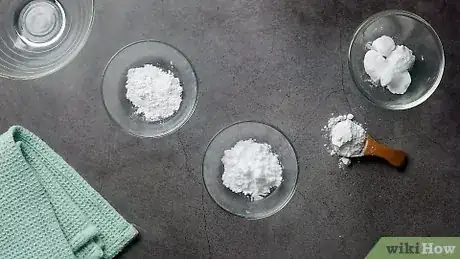
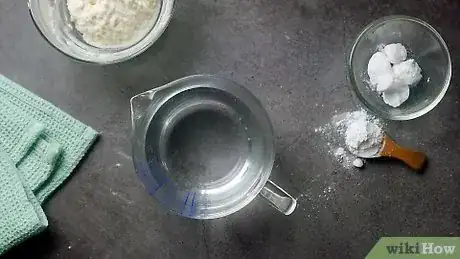
-Step-5.webp)

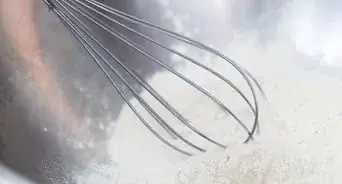
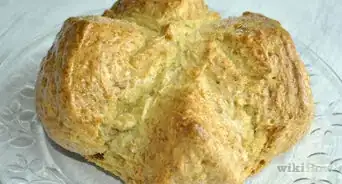













-Step-5.webp)
